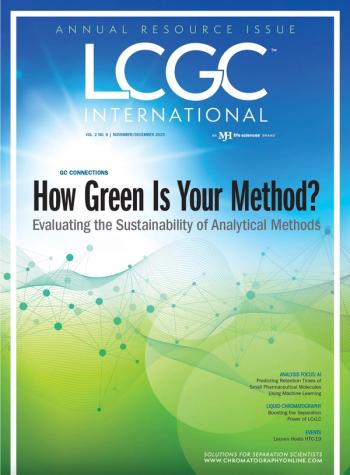
- The Column-08-22-2011
- Volume 7
- Issue 15
Collaborative cancer research agreement
The National Cancer Center, situated in Chuo-ku, Tokyo, Japan, and Shimadzu have reached a comprehensive collaborative research agreement that, it is hoped, will lead to the development of internationally leading, high-level, cutting-edge medical technologies that contribute to the suppression of cancer and the promotion of human health.
The National Cancer Center, situated in Chuo-ku, Tokyo, Japan, and Shimadzu have reached a comprehensive collaborative research agreement that, it is hoped, will lead to the development of internationally leading, high-level, cutting-edge medical technologies that contribute to the suppression of cancer and the promotion of human health. These include technological developments related to the realization of ultra-early cancer diagnoses, pharmacokinetic analysis for the achievement of a revolution in the drug discovery process, and medical treatments. According to the company, these developments will be accomplished through a fusion of the high-level cancer research techniques and clinical experience at the centre, and the company’s technologies in next-generation medical treatment fields.
The company has been pursuing R&D in the medical treatment fields of molecular imaging technology and biomarker searches, based on the fusion and application of its chromatography, mass spectrometry and other core analysis and measuring technology with medical imaging technology.
“Thus far,” said the company’s president Akira Nakamoto, ”the life sciences have been the core enterprise at Shimadzu. In the future, however, I would like to see the biomarker candidates discovered to‑date applied to ultra-early diagnosis; we believe this can be accomplished through the implementation of clinically useful medical science and a fusion of imaging diagnostics and molecular imaging, in conjunction with the NCC.”
For more information on the company visit
Articles in this issue
over 14 years ago
Pittcon 2012 plenary lecture announcedover 14 years ago
Leeches in bottlesover 14 years ago
Distinguished research awardover 14 years ago
CESI-MS: A New Perspective for Metabolic Profiling of Body Fluidsover 14 years ago
Death of a Salesman...over 14 years ago
Separation Technologies for Water Analysisover 14 years ago
Tips & Tricks: GPC/SEC Sample PreparationNewsletter
Join the global community of analytical scientists who trust LCGC for insights on the latest techniques, trends, and expert solutions in chromatography.



